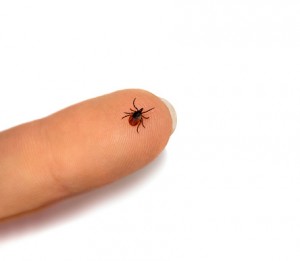

 A new bacterium known as Borrelia mayonii has been discovered, which is similar to Borrelia burgdorferi – the Lyme disease-causing bacterium. But how does Borrelia mayonni cause Lyme disease in people? Well, basically, in the same way as B. burgdorferi would.
A new bacterium known as Borrelia mayonii has been discovered, which is similar to Borrelia burgdorferi – the Lyme disease-causing bacterium. But how does Borrelia mayonni cause Lyme disease in people? Well, basically, in the same way as B. burgdorferi would.
Six people have been infected with B. mayonni so far. They were suspected to have Lyme disease, but their tests yielded different results.
There are many similarities between the Lyme disease caused by B.mayonii and B.burgdorferi, including the onset of a fever, headache, rash, and neck pain, then progressing to arthritis-like symptoms in the later stages. The symptoms that set the Lyme disease caused by B. mayonii apart (as detected so far) are presence of nausea, vomiting, diffused rashes, and higher concentrations of bacteria in the blood.
Both B. burgdorferi and B. mayonii are transmitted through deer tick bites, though researchers believe B. mayonii is limited to the ticks in the upper Midwest U.S.
The good news is, the diagnostic testing already used for B.burgdorferi can be used to detect B.mayonii, and the same treatment can be used as well.
To lower your risk of Lyme disease from either bacterium, it’s important to limit your exposure to ticks and put forward some effective prevention methods. Here are some prevention tips for lowering your risk of Lyme disease.
Even if you have tried your best to avoid a tick from latching on, it can still happen, so removing the tick as soon as you spot it also lowers your risk of Lyme disease – but there is a right and wrong way to do it.
For starters, don’t try to burn the tick off, as it can cause bacteria to be released, leading to infection. The best way to remove a tick is by using tweezers or thin forceps. If the tick is intact, you can bring it to your doctor for identification.
Early signs of a tick-borne illness include fever and chills, headache, fatigue, muscle aches, and, in some cases, a bull’s eye rash, but these symptoms aren’t universal.
Sources:
http://www.thelancet.com/journals/laninf/article/PIIS1473-3099(15)00464-8/fulltext
Copyright © www.orthopaedics.win Bone Health All Rights Reserved